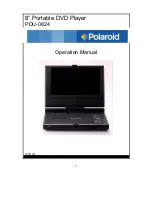
14
BRIGGSandSTRATTON.COM
Creating a Temporary Cold Weather Shelter
1. For temporary shelter, the original shipping carton can
be used.
2. Cut off top carton flaps and one long side of carton to
expose muffler side of unit. If required, tape up other
sides of carton to fit over generator as shown.
NOTE:
If required, remove wheel kit to fit carton over
generator as shown.
3. Cut appropriate slots to access receptacles of unit.
4. Face exposed end away from wind and elements.
5. Locate generator as described in the section
Generator
Location
. Keep exhaust gas from entering a confined
area through windows, doors, ventilation intakes or
other openings.
6. Start generator as described in the section
Starting the
Engine
, then place carton over generator. Keep at least
5 ft. (1.5 m) clearance on all sides of generator
including overhead with shelter in place.
7. Remove shelter when temperatures are above 40°F
[4°C].
8. Turn engine OFF and let cool two (2) minutes before
refueling. Let any spilled fuel evaporate before starting
engine.
Building a Cold Weather Shelter
1. Using non combustible material with a fire rating of at
least one hour, build a shelter that will enclose three
sides and the top of the generator. Make sure muffler
side of generator is exposed.
NOTE:
Contact your local building material supplier for non
combustible materials with a fire rating of at least one hour.
IMPORTANT:
Be sure shelter can easily be repositioned for
change in wind direction.
2. DO NOT enclose generator any more than shown.
Shelter should hold enough heat created by the
generator to prevent icing problem.
NOTE:
If a wheel kit is installed on the generator, enlarge
shelter accordingly.
3. Follow steps 3 through 8 as described previously in
Creating a Temporary Cold Weather Shelter
.
Wind
WARNING
Contact with muffler area can result in serious
burns.
Exhaust heat / gases can ignite combustibles,
structures or damage fuel tank causing a fire.
• DO NOT touch hot parts and AVOID hot exhaust gases.
• Allow equipment to cool before touching.
• Keep at least 5 feet (1.5 m) of clearance on all sides of
generator including overhead with shelter in place.
• Remove shelter when temperatures are above 40°F [4°C].
WARNING
Running engine gives off carbon monoxide, an
odorless, colorless, poison gas.
Breathing carbon monoxide can cause headache,
fatigue, dizziness, vomiting, confusion, seizures,
nausea, fainting or death.
• Operate generator ONLY outdoors.
• Install a battery operated carbon monoxide alarm near the
bedrooms.
• Keep exhaust gas from entering a confined area through
windows, doors, ventilation intakes, or other openings.
• DO NOT start or run engine indoors or in an enclosed area,
(even if windows and doors are open), including the generator
compartment of a recreational vehicle (RV).
Содержание 206405GS
Страница 25: ...25 Reserved ...















































